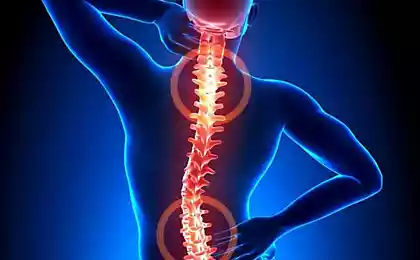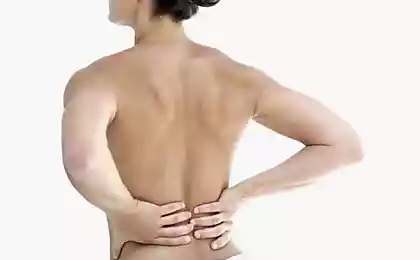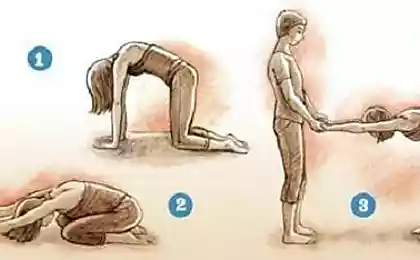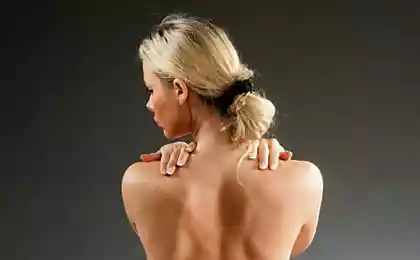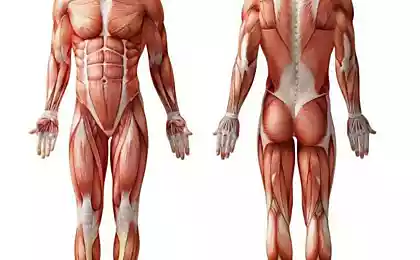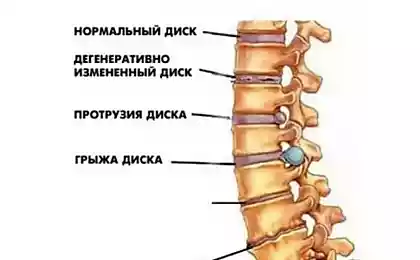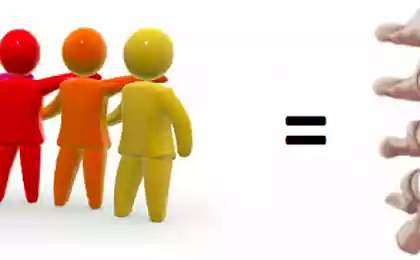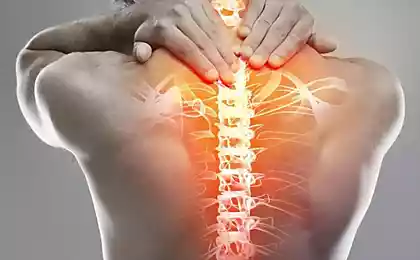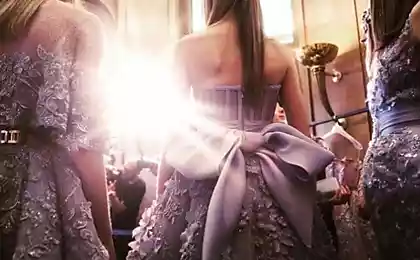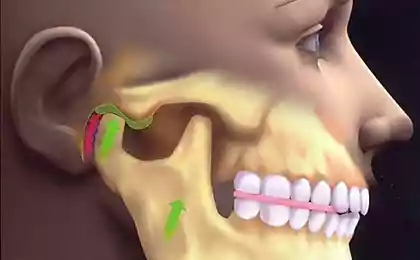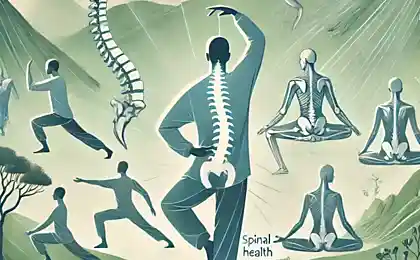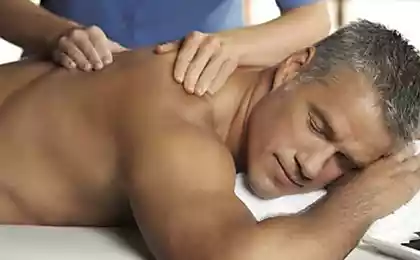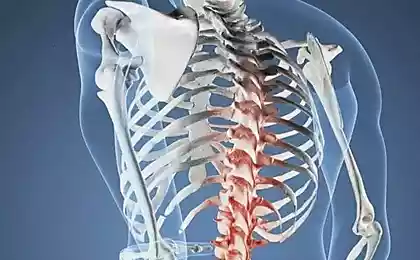1412
Diagnostics of the main dysfunctions of the spine Fryette
Lower back pain in the thoracic spine, radiculitis, radicular syndromes, and even low back pain can be considered through the concept of dysfunction in Fraietta. The article provides a simplified diagram of osteopathic diagnostics of the major dysfunctions of the lumbar and thoracic spine.
Among the concepts of disorders of mobility in the spine holds a special place concept Fraietta (Harrison H. Fryette). It impresses by its simplicity, reliability of diagnostic tests, effectiveness of therapeutic interventions, clarity retesting, quick effect, whichever method of exposure was used: although muscle-energy technique, even though trust.

(The principles of palpatory diagnosis and manipulative technique. Myron C. Beal, D. O.)
Dysfunction are considered from the standpoint of biomechanics of the spinal segment at the level of bhoothnath (facet) joints. When movements in these joints occurs a sliding movement up and down. In extension of the spine apophysis of the upper vertebra glide down and cover the spikes lower, when bent — up slide and open the processes of the lower. In side the tilt of the bending process of the upper slips in the process lower down, by unbending the bone of the upper slips up process of the bottom.
According to the concept Fraietta possible 3 options dysfunction of the spine:
NSR – dysfunction is in neutral
FRS dysfunction in the inflections
ERS – dysfunction in extensions
Where
N – neutral position,
F – flexion,
E – extension,
R – rotation,
S – lateroflexion (side bending).
To investigate the position of the vertebra can palpation of the transverse processes on one side will vitrociset transverse process, on the other – to slide, and also by deviation of the spinous process in the direction of rotation of the vertebra.
NSR
In NSR in the neutral position with one hand will vitrociset transverse processes of several vertebrae, while the arc formed by the spinous processes will protivopravnoy. In the position of the inflection and position of extensions the picture will change to normal.
FRS
In FRS in a neutral position or normal, or transverse process sticks out the opposite from the problem side a bit and may move the spinous process in the direction of rotation, in the position of the extensions clearly sticks dotirovanie transverse process of the vertebra from the opposite face problems, and the spinous process is displaced in the direction of rotation.
Causal, blocked, stuck facet on the other hand – it happened during inflections and when the segment is transferred to the extension in the opposite facet of the movement and the upper vertebra is wrapped around this locked facets. From the problems bootnote the joints are in the position of inflection of the vertebrae and with an opposite move in the position of the extensions of the vertebrae.
In the position of the inflection pattern will change again to normal – in this position arose dysfunction; both facets are in the same position and transverse processes of the vertebrae becomes the same in normal position.
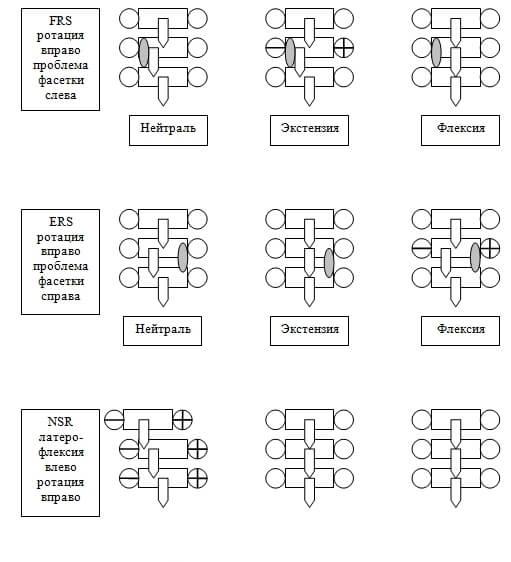
ERS
In ERS in the neutral position or normal, or sticking dotirovanie transverse process of the vertebra from the dysfunction and little can be displaced spinous process in the direction of rotation, position of the inflection clearly sticks dotirovanie transverse process of the vertebra and the spinous process is displaced in the direction of rotation.
"Diet one palm": how to determine the size of the portions for proper nutritionESSENTIAL amino acids: effects on the human body
Causal, blocked, stuck facet on this side; vertebrae wrapped around this locked facet during the transition segment from the extensions in flexion. In the position of extensions the picture will change back to normal – in this position arose dysfunction; both facets are in the same position — transverse processes of vertebrae as well be in the normal position. published
Source: obiosphere.spb.ru/osteopathy/%D0%BF%D0%BE%D0%B7%D0%B2%D0%BE%D0%BD%D0%BE%D1%87%D0%BD%D0%B8%D0%BA-%D1%81%D1%82%D1%80%D0%B0%D1%81%D1%82%D0%B8-%D0%BF%D0%BE-%D1%84%D1%80%D0%B0%D0%B9%D0%B5%D1%82%D1%82%D1%83.html
Among the concepts of disorders of mobility in the spine holds a special place concept Fraietta (Harrison H. Fryette). It impresses by its simplicity, reliability of diagnostic tests, effectiveness of therapeutic interventions, clarity retesting, quick effect, whichever method of exposure was used: although muscle-energy technique, even though trust.

(The principles of palpatory diagnosis and manipulative technique. Myron C. Beal, D. O.)
Dysfunction are considered from the standpoint of biomechanics of the spinal segment at the level of bhoothnath (facet) joints. When movements in these joints occurs a sliding movement up and down. In extension of the spine apophysis of the upper vertebra glide down and cover the spikes lower, when bent — up slide and open the processes of the lower. In side the tilt of the bending process of the upper slips in the process lower down, by unbending the bone of the upper slips up process of the bottom.
According to the concept Fraietta possible 3 options dysfunction of the spine:
NSR – dysfunction is in neutral
FRS dysfunction in the inflections
ERS – dysfunction in extensions
Where
N – neutral position,
F – flexion,
E – extension,
R – rotation,
S – lateroflexion (side bending).
To investigate the position of the vertebra can palpation of the transverse processes on one side will vitrociset transverse process, on the other – to slide, and also by deviation of the spinous process in the direction of rotation of the vertebra.
NSR
In NSR in the neutral position with one hand will vitrociset transverse processes of several vertebrae, while the arc formed by the spinous processes will protivopravnoy. In the position of the inflection and position of extensions the picture will change to normal.
FRS
In FRS in a neutral position or normal, or transverse process sticks out the opposite from the problem side a bit and may move the spinous process in the direction of rotation, in the position of the extensions clearly sticks dotirovanie transverse process of the vertebra from the opposite face problems, and the spinous process is displaced in the direction of rotation.
Causal, blocked, stuck facet on the other hand – it happened during inflections and when the segment is transferred to the extension in the opposite facet of the movement and the upper vertebra is wrapped around this locked facets. From the problems bootnote the joints are in the position of inflection of the vertebrae and with an opposite move in the position of the extensions of the vertebrae.
In the position of the inflection pattern will change again to normal – in this position arose dysfunction; both facets are in the same position and transverse processes of the vertebrae becomes the same in normal position.

ERS
In ERS in the neutral position or normal, or sticking dotirovanie transverse process of the vertebra from the dysfunction and little can be displaced spinous process in the direction of rotation, position of the inflection clearly sticks dotirovanie transverse process of the vertebra and the spinous process is displaced in the direction of rotation.
"Diet one palm": how to determine the size of the portions for proper nutritionESSENTIAL amino acids: effects on the human body
Causal, blocked, stuck facet on this side; vertebrae wrapped around this locked facet during the transition segment from the extensions in flexion. In the position of extensions the picture will change back to normal – in this position arose dysfunction; both facets are in the same position — transverse processes of vertebrae as well be in the normal position. published
Source: obiosphere.spb.ru/osteopathy/%D0%BF%D0%BE%D0%B7%D0%B2%D0%BE%D0%BD%D0%BE%D1%87%D0%BD%D0%B8%D0%BA-%D1%81%D1%82%D1%80%D0%B0%D1%81%D1%82%D0%B8-%D0%BF%D0%BE-%D1%84%D1%80%D0%B0%D0%B9%D0%B5%D1%82%D1%82%D1%83.html
How to economically heat water for a Cup of coffee?
How to adjust the weight with the help of baths and saunas


